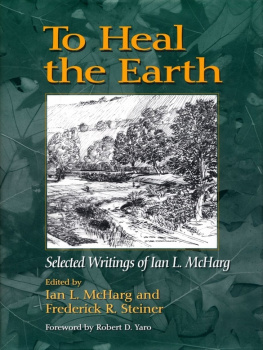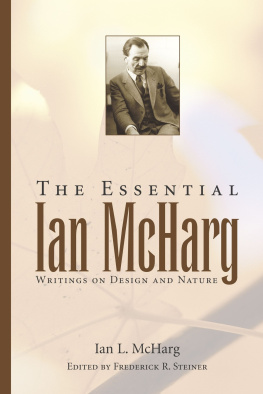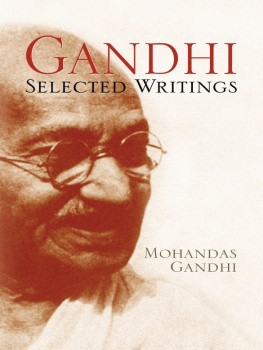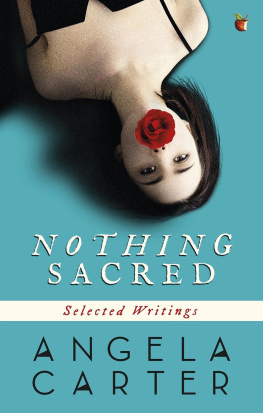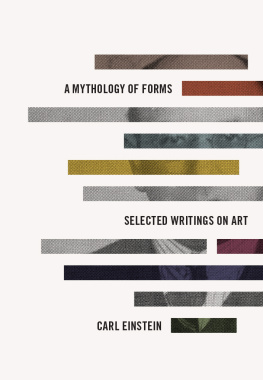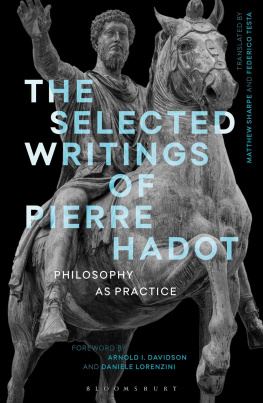McHarg Ian L. - To Heal the Earth: Selected Writings of Ian L. McHarg
Here you can read online McHarg Ian L. - To Heal the Earth: Selected Writings of Ian L. McHarg full text of the book (entire story) in english for free. Download pdf and epub, get meaning, cover and reviews about this ebook. year: 1998;2012, publisher: Island Press, genre: Science. Description of the work, (preface) as well as reviews are available. Best literature library LitArk.com created for fans of good reading and offers a wide selection of genres:
Romance novel
Science fiction
Adventure
Detective
Science
History
Home and family
Prose
Art
Politics
Computer
Non-fiction
Religion
Business
Children
Humor
Choose a favorite category and find really read worthwhile books. Enjoy immersion in the world of imagination, feel the emotions of the characters or learn something new for yourself, make an fascinating discovery.
- Book:To Heal the Earth: Selected Writings of Ian L. McHarg
- Author:
- Publisher:Island Press
- Genre:
- Year:1998;2012
- Rating:3 / 5
- Favourites:Add to favourites
- Your mark:
- 60
- 1
- 2
- 3
- 4
- 5
To Heal the Earth: Selected Writings of Ian L. McHarg: summary, description and annotation
We offer to read an annotation, description, summary or preface (depends on what the author of the book "To Heal the Earth: Selected Writings of Ian L. McHarg" wrote himself). If you haven't found the necessary information about the book — write in the comments, we will try to find it.
To Heal the Earth: Selected Writings of Ian L. McHarg — read online for free the complete book (whole text) full work
Below is the text of the book, divided by pages. System saving the place of the last page read, allows you to conveniently read the book "To Heal the Earth: Selected Writings of Ian L. McHarg" online for free, without having to search again every time where you left off. Put a bookmark, and you can go to the page where you finished reading at any time.
Font size:
Interval:
Bookmark:
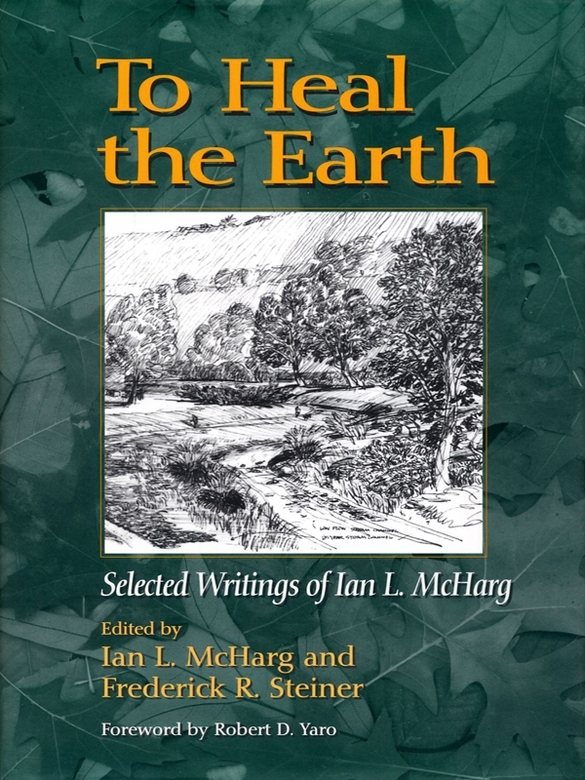
Most essays and articles in this collection have been revised and reprinted with the kind permission of the original publisher. The following papers were published in these original sources:
Man and Environment. In Leonard J. Duhl and John Powell, eds. The Urban Condition. New York: Basic Books, pp. 44-58 (1963).
The Place of Nature in the City of Man. The Annals of the American Academy of Political Science (Urban Revival: Goals and Standards) 325 (March):1-12 (1964).
Ecological Determinism. In F. Fraser Darling and John P. Milton, eds. Future Environments of North America. Garden City, N.Y.: The Natural History Press, pp. 526-38 (1966). From Future Environments of North America by Fraser Darling and John P. Milton. Copyright 1966 by the Conservation Foundation. Used by permission of Doubleday, a division of Bantam Doubleday Dell Publishing Group, Inc.
Values, Process and Form. In The Smithsonian Institution. The Fitness of Mans Environment. New York: Harper & Row, pp. 207-27 (1968). Used by permission of the publisher.
Natural Factors in Planning. Journal of Soil & Water Conservation 52 (1, January-February): 13-17 (1997).
Regional Landscape Planning. In A. J. W. Scheffey, ed. Resources, the Metropolis, and the Land-Grant University. Proceedings of the Conference on Natural Resources, No. 410. Amherst: University of Massachusetts, pp. 31-35 (1963). (Comments by others on McHargs remarks continue through p. 37.)
Open Space from Natural Processes. In David A. Wallace, ed. Metropolitan Open Space and Natural Process. Philadelphia: University of Pennsylvania Press, pp. 10-52 (1970). From Metropolitan Open Space and Natural Process, edited by David A. Wallace. Copyright 1970 by the University of Pennsylvania Press. Reprinted with permission of the publisher.
Must We Sacrifice the West? In Terrell J. Minger and Sherry D. Oaks, eds. Growth Alternatives for the Rocky Mountain West. Boulder, Colo.: Westview Press, pp. 203-11 (1975).
Human Ecological Planning at Pennsylvania. Landscape Planning 8:109-120 (1981).
Ecological Planning: The Planner as Catalyst. In Robert W. Burchell and George Sternlieb, eds. Planning Theory in the 1980s (2d edition, 1982). New Brunswick, N.J.: The Center for Urban Policy Research, Rutgers University, pp. 13-15 (1978). Reprinted with permission of Rutgers University, Center for Urban Policy Research, from Planning Theory in the 1980s: A Search for Future Directions, edited by Robert W. Burchell and George Sternlieb. Copyright 1978 Rutgers University.
The Court House Concept. Architectural Record 122 (September):193-200 (1957). Reprinted with permission from Architectural Record, Vol. 122 (1957).
Architecture in an Ecological View of the World. AIA Journal 54(5):47-51 (1970).
Nature Is More Than a Garden. In Mark Francis and Randolph T. Hester, Jr., eds. The Meaning of Gardens: Idea, Place, and Action. Cambridge, Mass.: The MIT Press, pp. 34-37 (1990).
Ecology and Design. In George F. Thompson and Frederick R. Steiner, eds. Ecological Design and Planning . New York: Wiley, pp. 321-32 (1996). Copyright 1996. Reprinted by permission of John Wiley & Sons, Inc.
An Ecological Method for Landscape Architecture. Landscape Architecture 57(2):105-7 (1967).
A Comprehensive Highway Route Selection Method. Highway Research Record 246:1-12 (1968). In Transportation Research Record 246 , Transportation Research Board, National Research Council, Washington, D.C. (1968).
Biological Alternatives to Water Pollution. In Joachim Tourbier and Robert W. Pierson, Jr., eds., Biological Control of Water Pollution. Philadelphia: Center for Ecological Design and Planning, University of Pennsylvania, pp. 7-12 (1976).
A Case Study in Ecological Planning: The Woodlands, Texas. In Marvin T. Beatty, Gary W. Petersen, and Lester D. Swindale, eds. Planning the Uses and Management of Land. Madison, Wisc.: American Society of Agronomy, Crop Science Society of America, and Soil Science Society of America, pp. 935-55, chap. 38 (1979).
Plan for the Valleys vs. Spectre of Uncontrolled Growth. Landscape Architecture 55 (4,April):179-81 (1965).
An Ecological Planning Study for Wilmington and Dover, Vermont. The study was prepared by Wallace, McHarg, Roberts, and Todd for Wilmington and Dover, Vermont, the Windham Regional Planning and Development Commission, and the Vermont State Planning Office, April 1972.
Ecological Plumbing for the Texas Coastal Plain. Landscape Architecture 65 (1, January):78-89 (1975).
A Strategy for a National Ecological Inventory. In A Database Prototype for a National Ecological Inventory. Washington, D.C.: U.S. Environmental Protection Agency, pp. 6-26, chap. 2 (1992).
My battle began almost fifty years ago with a tentative presumption in favor of nature that became explicit in the 1960s. I employed this view wherever opportunity was affordedin small sites and in metropolitan regions, in urban areas and rural landscapes, and across North America and abroad. By applying increased knowledge and developing a powerful model and method, I engaged a large army of practitioners: first, students, next, readers of Design with Nature , then, viewers of Multiply and Subdue the Earth , and finally, audieMultiply and Subdue the Earth, and finally, audiencesnces throughout the country and the world.
This commitment recognized the enemy to be those devoted to anthropocentrism and anthropomorphism, those who believed that man was the justification of evolution, that he exclusively shared divinity and was given dominion over the earth, that he was licensed to subjugate nature and empowered to treat the planet as a storehouse awaiting plunder.
So there was a war between those who would treat the world and its creatures with, at least, deference, and perhaps better, with reverence, and those who would destroy without care or remorse. I resolved to mobilize all of my energies on behalf of the stewards.
For over a quarter of a century, I have been a strong advocate of ecological inventories at all scales, from the site to the whole earth. If we are to undertake a global ecological inventory and engage in continuous monitoring, the questions will quickly arise: what, where, and how should we restore? In brief, do we select areas massively destroyed or, in contrast, select the pristine which merely needs protection? Whatever course we follow will require a massive rediscovery of the earth in times of good health. For the West, that would be before the industrial revolution. For most of the developing world the time span would be much shorter, possibly only half a century. But we must describe the primeval world and consider how to restore it, how to green it, how to heal it.
Of course the greatest agency involved in this process is natural succession, regeneration, that process which is most dramatically portrayed on the slopes of recently active volcanoes but occurs worldwide. We must do more than sustain the planet, we must design regenerative communities and landscapes. Or we must get out of the way and let the earth regenerate itself.
A dramatic example of this is the demilitarized zone in Korea, which is 250 kilometers long, 4 kilometers wide, and is bordered by a high fence that has succeeded to forest, where many species of plants and animals once thought to be extinct are now abundant. Where are the healthy tissues of the world life body, the virgin areasArctic and Antarctic ice caps, miles of deep ocean trenches, mountains as high as they are deep, deserts, forests, bare rock, snow and ice, but, above all, water?
Font size:
Interval:
Bookmark:
Similar books «To Heal the Earth: Selected Writings of Ian L. McHarg»
Look at similar books to To Heal the Earth: Selected Writings of Ian L. McHarg. We have selected literature similar in name and meaning in the hope of providing readers with more options to find new, interesting, not yet read works.
Discussion, reviews of the book To Heal the Earth: Selected Writings of Ian L. McHarg and just readers' own opinions. Leave your comments, write what you think about the work, its meaning or the main characters. Specify what exactly you liked and what you didn't like, and why you think so.

